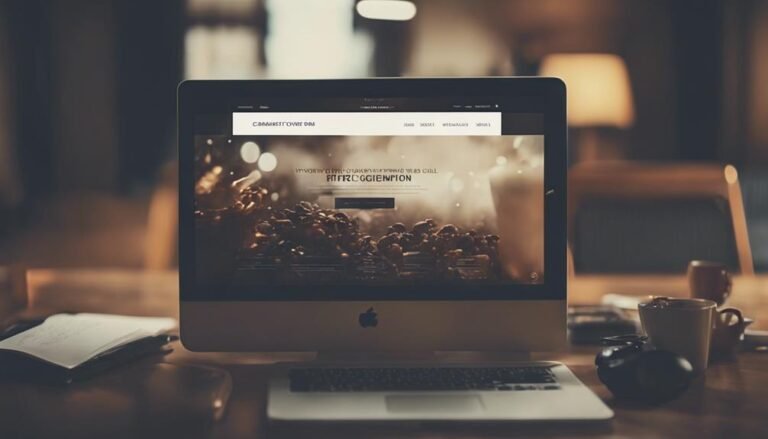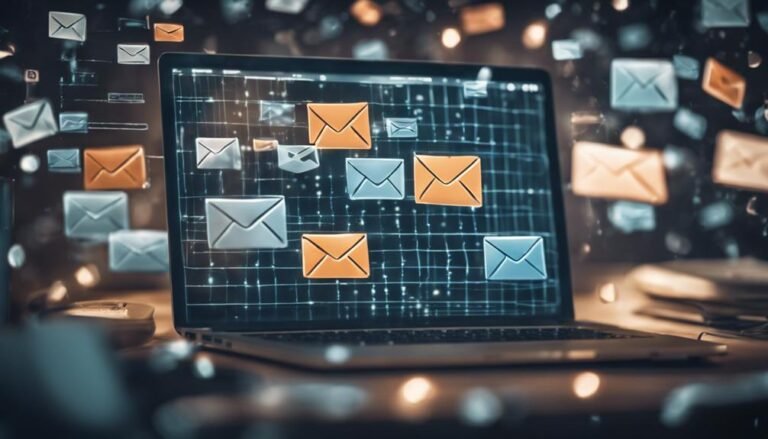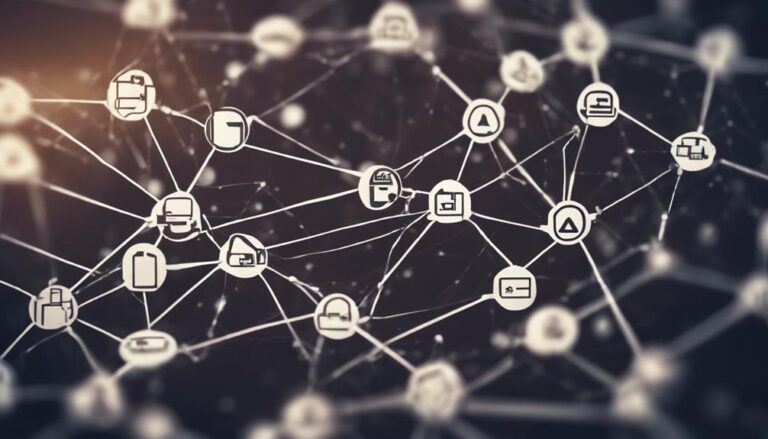Cold Emailing Techniques for Lead Generation
Did you know that 75% of companies say that email offers ‘excellent’ to ‘good’ ROI (Return on Investment)?
When it comes to cold emailing for lead generation, mastering the art can be a game-changer for your business.
From crafting captivating subject lines to perfecting the timing of your emails, each aspect plays a crucial role in increasing your conversion rates.
Discover the secrets behind effective cold emailing techniques that will set you apart from the competition and help you reach new heights in your lead generation efforts.
Key Takeaways
- Personalization based on recipient’s interests increases lead generation effectiveness.
- Timing emails strategically enhances lead generation success.
- A/B testing refines cold emailing strategies for better lead generation results.
- Customized follow-up emails boost engagement and lead conversion rates.
Crafting Compelling Subject Lines
Crafting compelling subject lines is crucial for grabbing the attention of your recipients and increasing email open rates. By incorporating emotional triggers and power words into your subject lines, you can significantly enhance the effectiveness of your cold emails. Emotional triggers, such as curiosity, urgency, or fear of missing out, can evoke a response from your recipients, prompting them to open your email.
Power words, on the other hand, are impactful terms that create a sense of importance and relevance, compelling individuals to engage with your message.
When crafting subject lines, consider using power words like ‘exclusive,’ ‘limited time,’ ‘urgent,’ or ‘personalized’ to pique the interest of your audience. These words trigger a sense of importance and urgency, motivating recipients to prioritize opening your email. By strategically incorporating emotional triggers and power words into your subject lines, you can increase the likelihood of your cold emails being opened and improve your overall lead generation efforts.
Personalizing Email Content
To maximize the impact of your cold emails, personalizing the content based on the recipient’s interests and needs is a strategic approach that can significantly boost engagement rates. Customized greetings are a simple yet effective way to grab the recipient’s attention right from the start. By addressing them by name or referencing specific details about their company or industry, you demonstrate that your email isn’t just another generic message.
Tailored messaging goes beyond just using the recipient’s name. It involves crafting the entire body of the email to resonate with their pain points, challenges, or goals. Researching the recipient’s background or recent activities can provide valuable insights to customize your message effectively. For instance, mentioning a recent achievement of their company or a shared connection can create a personal touch that shows you’ve done your homework.
Personalization humanizes your cold emails, making them more relatable and engaging for the recipient. It shows that you value their individuality and aren’t just mass-sending generic messages. By incorporating customized greetings and tailored messaging, you increase the likelihood of capturing the recipient’s interest and driving meaningful conversations.
Timing and Frequency Strategies
Maximizing the impact of your personalized cold emails also involves strategically considering the timing and frequency of your outreach efforts to optimize engagement and response rates.
Here are three key strategies to enhance your cold email campaigns:
- Email Scheduling: Timing plays a crucial role in the success of your cold emails. Research shows that sending emails on Tuesdays and Thursdays between 10 am and 2 pm tends to yield higher open rates. Additionally, consider the time zone of your recipients to ensure your emails land in their inbox at an optimal time.
- Outreach Frequency: Finding the right balance in how often you reach out to leads is essential. Bombarding them with emails can lead to annoyance and decreased interest. On the other hand, spacing out emails too far apart might make them forget about your initial contact. Test different frequencies and monitor response rates to determine the ideal cadence for your audience.
- Personalization: While timing and frequency are crucial, personalized content tailored to the recipient can significantly impact engagement. Make sure each email addresses the recipient by name and offers value specific to their needs or interests.
A/B Testing for Optimization
Optimizing your cold email campaigns through A/B testing is a strategic approach that allows you to refine your outreach efforts based on data-driven insights. A/B testing involves creating two variations of your email – one being the control (A) and the other the variation (B) – to analyze which performs better in terms of the conversion rate. By subjecting your emails to A/B testing, you can experiment with different elements such as subject lines, call-to-action buttons, or email copy to determine what resonates best with your audience.
Through A/B testing, you can gather valuable data insights that reveal which version of your email is driving higher conversion rates. By analyzing this data, you can make informed decisions on how to optimize your cold email campaigns for better results. Utilizing tools for data analysis can help you track and measure the effectiveness of each email variant, allowing you to refine your approach continuously.
Follow-Up and Persistence
Implementing a systematic follow-up strategy and maintaining persistence in your communication efforts can significantly enhance the effectiveness of your cold email campaigns for lead generation. To optimize your follow-up process, consider the following:
- Customized Templates: Tailoring your follow-up emails with personalized content can make your messages more engaging and relevant to the recipient. By addressing specific pain points or offering customized solutions, you increase the likelihood of getting a response.
- Automated Reminders: Setting up automated reminders can help you stay organized and ensure that you follow up with leads at the right intervals. This approach eliminates the risk of missing out on potential opportunities due to forgetfulness or oversight.
- Strategic Timing: Timing is crucial when it comes to follow-ups. Analyze data to determine the best days and times to send follow-up emails for maximum impact. By aligning your communication with the recipient’s schedule, you increase the chances of getting a response.
Conclusion
In conclusion, mastering cold emailing techniques is crucial for successful lead generation. By crafting compelling subject lines, personalizing content, and optimizing timing and frequency, you can significantly increase your chances of conversions.
A/B testing allows you to fine-tune your approach, while follow-up and persistence are key to sealing the deal. Keep refining your strategy and watch your leads grow exponentially.
Stay tuned for more tips and tricks to take your cold emailing game to the next level.







